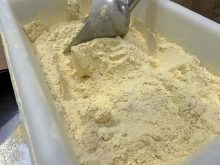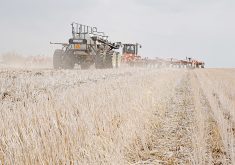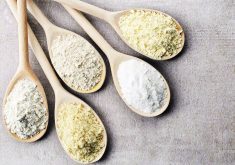The human food side of the pea protein business continues to grow, but pet food remains the ingredient’s dominant user
WINNIPEG — In June, Louis Dreyfus Co. broke ground at its new pea protein plant in Yorkton, Sask.
The processing plant could be completed by the fall of 2025 and may be operational in the spring of 2026.
The new facility will add to an expanding supply of pea protein that is processed in Western Canada. In 2021, Roquette opened the world’s largest pea protein plant in Portage la Prairie, Man.
Read Also

Chinese, Indian tariffs take toll on pea prices
The disruption of pea exports from Canada’s largest customers will likely result in slow pea exports for the remainder of the crop year.
Large and small agri-food companies are anticipating huge growth in pea protein demand because the healthy ingredient can be added to snack foods, ready-to-eat meals, yogurt, bread and other products.
But right now, the majority of pea protein is sold into the pet food market rather than for human food.

In 2023, global demand for pea protein was about 300,000 tonnes.
“The pet food market makes up about 83 per cent of that,” said Tanya Der, director of diversification and market insights with Pulse Canada.
“The other 17 per cent is human food.”
Der presented the pea protein data at the Pulse & Special Crops Convention held in downtown Winnipeg from Sept. 17-19.
The volume of pea protein used in the human food market is projected to increase in the next five years. However, a forecast from Euromonitor, a market analysis firm, says pet food will remain the major market for pea protein in 2029.
Of note, plant-based milk dominates demand for pea protein in the human food market.
“In 2023, nearly 27,000 tonnes of pea protein ingredient was used in the (plant based) milk industry,” Der said.

“It (the forecast) is showing that it’s going to continue growing over the next five years.”
In comparison, categories such as meat substitutes, bread and snack bars use a small amount of pea protein. Those segments of the food industry purchased less than 10,000 tonnes of pea protein each in 2023.
Returning to pets, peas are the most popular pulse ingredient in dog and cat food.
In 2022, about 700 new pet food products were created with peas as an ingredient.
“Peas really dominate the market in this category,” Der said.
“Pea protein is the second most common pulse ingredient used in pet food. There were over 200 new products introduced to the market in the past year…. Pet food is also a category that is getting a lot of traction with the rise in new pet owners across the globe.”
















